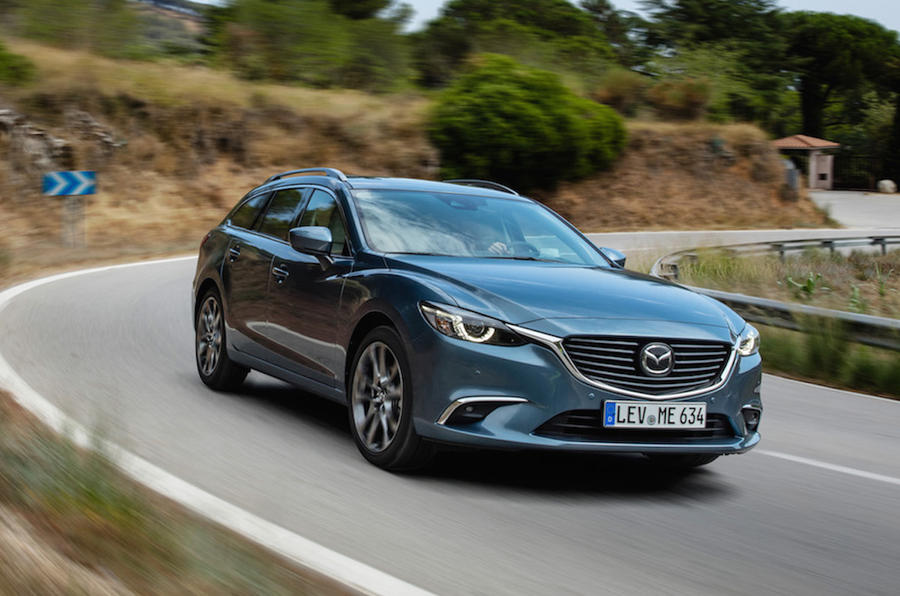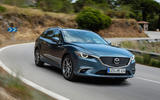What is it?
If you're feeling a little confused, don't worry, you did see a Mazda 6 facelift drive not long ago. Last year the car received some styling and chassis changes to bring it up to date, but now, for 2016 (or the 2017 model year) there are yet more revisions to keep it relevant next to rivals such as the Ford Mondeo and Skoda Superb Estates.
The changes apply to both the Saloon and the Tourer we're driving here, although visually, from the outside, there have been no changes at all, so you can stop squinting at the pictures. Inside, however, while both models' dimensions remain exactly the same, there have been material upgrades, while a more generous level of standard equipment has been applied to the higher SE-L Nav and Sport Nav trims. Every cars' city braking technology now recognises pedestrians, too.
More notably, all Mazda 6 models now come with something called G-Vectoring Control, or GVC. Not to be confused with torque vectoring, GVC doesn't brake the wheels. Instead, when turning into a corner, the engine senses steering inputs and very slightly reduces its torque output, which in turn shifts the weight forward slightly and aids front tyre effectiveness. However, its benefits extend beyond that, also providing greater high-speed stability and increasing driver and passenger comfort. It's potentially clever stuff.
What's it like?
GVC has been designed to be imperceptible, which is lucky, because we couldn't detect a thing. Apparently we're talking about differences of 0.01-0.05g when entering corners, and it isn't intended to make the car handle better on the limit, just to make the whole process of cornering easier and more stable.
Either way, the Mazda 6 remains one of the better-handling cars in the class, benefitting from quite light but linear, precise steering and an eagerness to turn in to corners not always demonstrated by its rivals. It also takes a lot before the front wheels begin to protest and give up grip, and for what feels like quite a large car from behind the wheel, its body stays propped up nicely. Ultimately a Mondeo Estate is more rounded dynamically, but the 6 isn't far short.
The 148bhp version of this diesel seems to make the most sense. Work has been done to reduce turbo lag and improve torque delivery, and while it's difficult to detect this over the old car, the lesser of the two diesels remains happy to pull from 1800rpm and doesn't suffer too narrow a band on song. The 168bhp version is quicker in a sprint and in gear, but not by enough to warrant the extra cash needed to buy and run it.
Mazda has also worked on diesel refinement. It has revised its 2.2-litre unit's pistons to ensure less vibration and fiddled with the injector timing in an effort to cancel out some of the engine's higher-frequency sounds. There are also upgraded door seals and sound-deadening materials throughout. The results in this department are more obvious: the 148bhp model we tried felt smoother and quieter under load than before, although it's still not class-leading in this respect, even if the fluid feel of its manual gearbox just might be.
Decent agility is mixed with a commendable ride. Our test car wore 17in alloys, which picked up on some of the sharper ruts of our Spanish test route but got better with speed to provide a cosseting motorway cruise. Having also tried the larger 19in wheels, which add more fidget without much dynamic gain, we'd say the former are the way to go.



















Join the debate
Add your comment
Seems worth consideration
Context
Context, Autocar, is everything.
A low mileage user will not enjoy having to pay for dpf issues that the petrol doesn't experience.
Faint praise